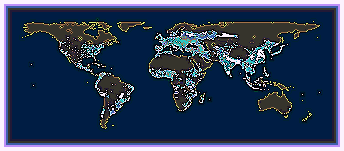
translate

translate |
|
Did you know that world population reached 6 billion on October 12, 1999, and will reach 9.3 billion by 2050? The impacts of continued population growth are already felt by a majority of nations. U.S. population, too, has grown from 152 million in 1950 to 270 million today, a 78% increase. We have doubled in 58 years. Growing at 3,000,000 per year, U.S. population is expected to approach half a billion people in 50 years!
Overpopulation is the root cause of most environmental problems. The demands of increasing population magnify demands for natural resources, clean air and water, as well as access to wilderness areas. Unless we start stacking people in high-rises, this means an increased demand for living space, with the inevitable result of more sprawl. The quality of life for future generations hinges on stabilizing both domestic and world population. |
|
by Roy Beck and Leon Kolankiewicz. This article is highly recommended to all population activists, environmentalists, and funders of environmental organizations. It examines in detail the events leading to abandonment of domestic population stabilization efforts by major environmental organizations. ZPG and Sierra Club are used as case studies in the article. |
|
The Great Challenge
Can you think of any problem in any area of human endeavor on any scale, from microscopic to global, whose long-term solution is in any demonstrable way aided, assisted, or advanced by further increases in population, locally, nationally, or globally? -- Prof. A.A. Bartlett |